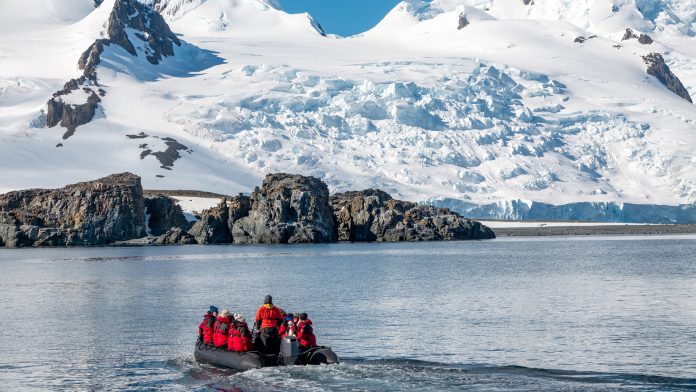A research team led by the University of Venice has successfully conducted a two-month expedition in Antarctica, revealing invaluable information of temperature levels, and the concentration of greenhouse gases in the atmosphere in the past.
What will scientists’ study during this expedition?
Researchers conducted a study at a remote Little Dome C site in Antarctica, the first ice core drilling campaign of Beyond Epica-Oldest Ice that has been successfully completed. The expedition is an unprecedented effort in paleoclimatology studies, as its purpose is to go back in time by 1.5 million years to reveal invaluable information on temperature and on the concentration of greenhouse gases in the atmosphere in the past.
The climate and the environmental history of Earth is archived in the ice, which can therefore reveal information from centuries and even hundreds of millennia ago on the evolution of temperature and on the composition of the atmosphere.
Thus, researchers will be able to assess the content of greenhouse gases, such as methane and carbon dioxide, that were once present in the atmosphere. Then, they will be able to link these findings with the evolution of temperature.
“We believe this ice core will give us information on the climate of the past and on the greenhouse gases that were in the atmosphere during the Mid-Pleistocene Transition (MPT), which happened between 900,000 and 1.2 million years ago,” explained Carlo Barbante. “During this transition, climate periodicity between ice ages changed from 41,000 to 100,000 years: the reason why this happened is the mystery we hope to solve.”
Who is involved in this study on past greenhouse gas concentration?
The study initially began in 2019, and is coordinated by Carlo Barbante, director of the Institute of Polar Sciences of the National Research Council of Italy (Cnr-Isp); it is expected to last seven years and to come to an end in 2026. This project was funded by an €11m from the European Commission and is supported by several other significant financial and in-kind contributions from participating nations.
The collaborative team consists of twelve European and non-European international research institutes and will benefit from interactions with the French Polar Institute, as well as the Italian National Antarctic Programme activities at the Italian-French Concordia Station.
What has been discovered so far?
From late November 2021 to the end of January 2022, the international team reached a depth of 130M, where the ice preserves information of the climate, greenhouse gases, and the atmosphere of approximately the last 3,000 years. The first firn and ice cores of Beyond Epica are currently stored at the Italian-French Concordia Station on the eastern Antarctic plateau.
During the next few years, samples that have already been accumulated, and the ones that will be collected during the next field campaigns, will be transported to European laboratories. The target is to reach a depth of about 2,700M, the ice thickness at Little Dome C.
What is ‘Little Dome C’?
Little Dome C is an area of 10 km2 located 34 km from the Italian-French Concordia Station, which is one of the most extreme places on Earth.
Glaciologists, engineers, and technicians of the international team have worked at an altitude of 3,233 metres above sea level, which is over 1,000 km away from the coast, in one of the harshest places on the planet in order to collect samples that hold evidence of the climate, greenhouse gases, and the atmosphere. Strong gusts of wind and a temperature almost always below -40°C, with lows of -52°C, made camp set-up even more challenging.
The main objectives held by the Beyond Epica-Oldest Ice team included setting up the camp, which can now host up to 15 people during the Antarctic summer, and the installation of a complex drilling system which is necessary to continue this unprecedented challenge during the next few seasons.
The drilling tent now contains the control cabin, a tilting drilling tower for the manoeuvring of the drilling system — which can extract ice cores up to 4.5-metre-long — and a laboratory for sampling preparation and storage. The drilling hole has been reamed and protected by a casing tube; this included the execution of two delicate operations that took several days to complete.
“We are very satisfied with the work done so far. Our next campaign will involve a final testing of the drilling system and then speedily proceeding to conduct deep drilling,” concluded Barbante.









